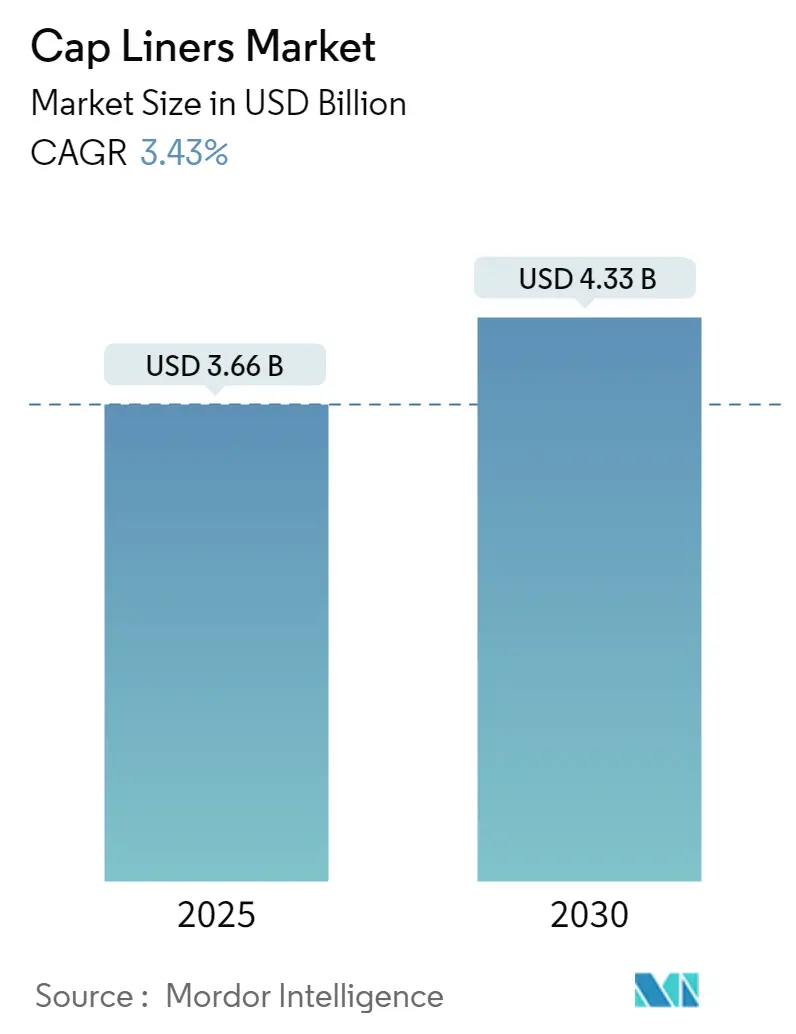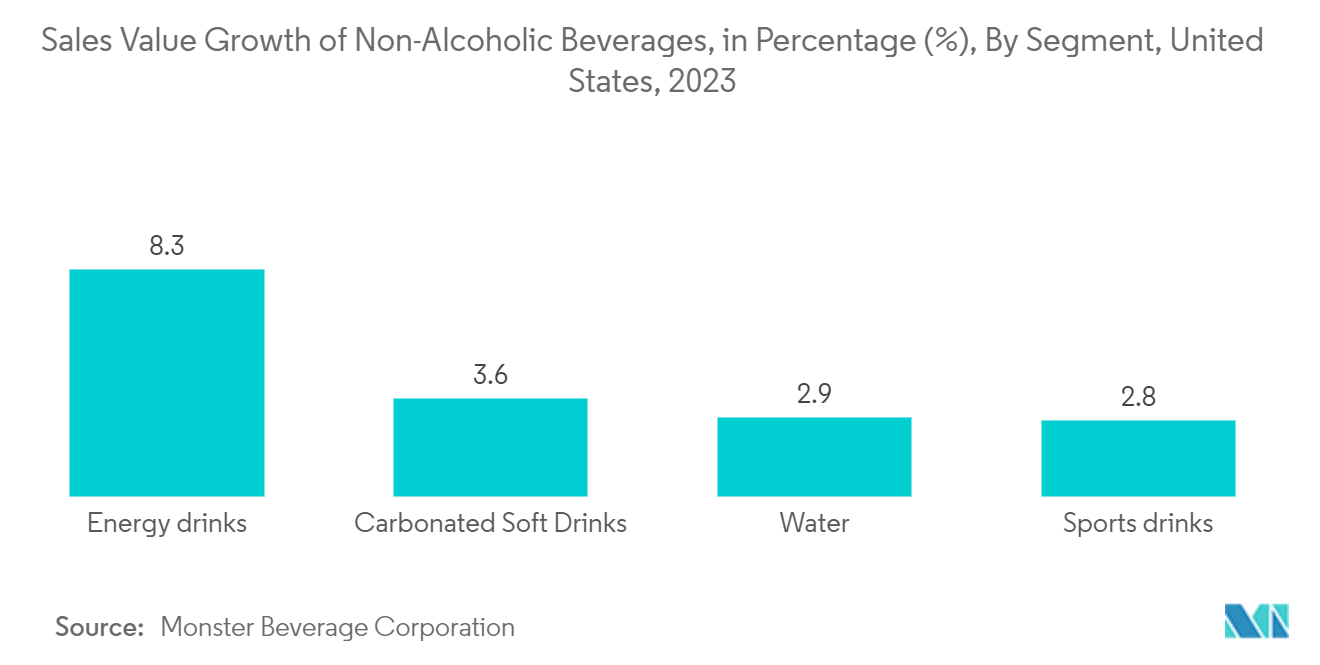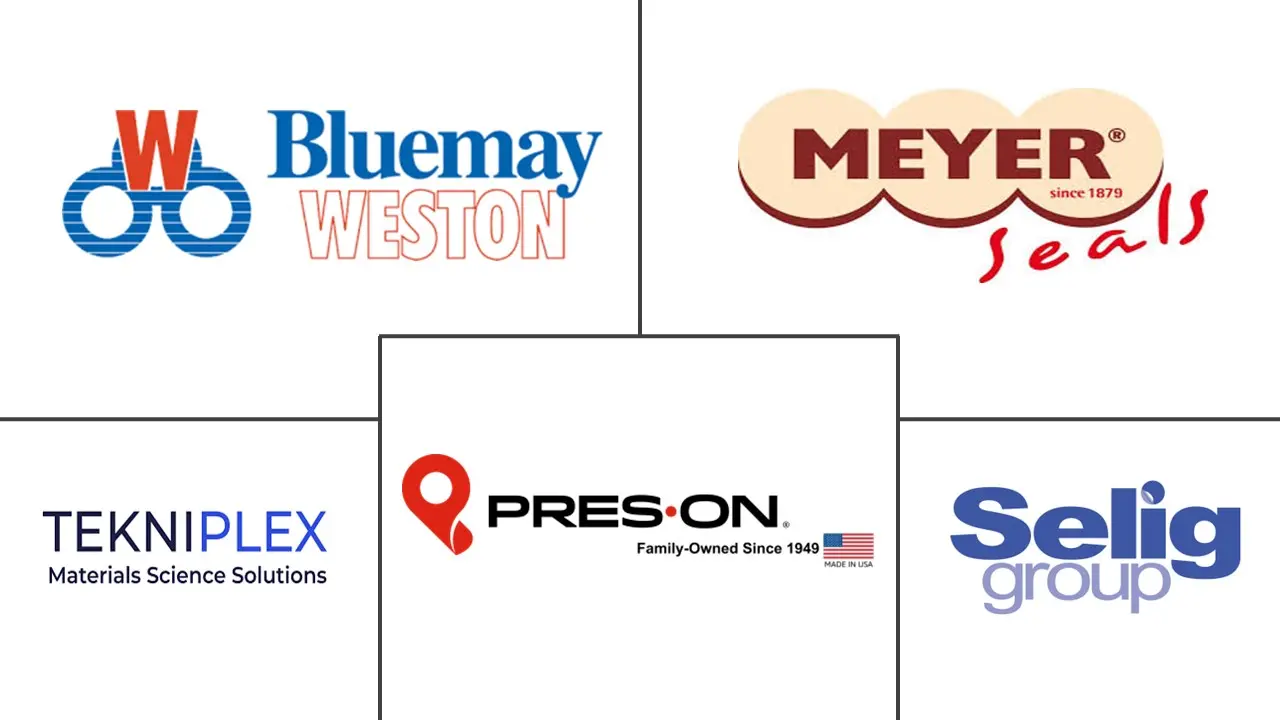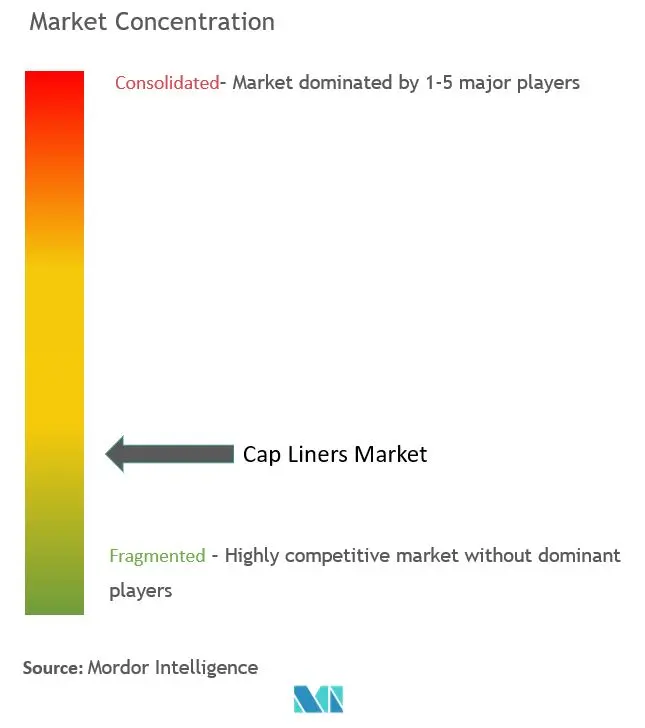
Cap Liners Market Analysis
The Cap Liners Market size is worth USD 3.66 Billion in 2025, growing at an 3.43% CAGR and is forecast to hit USD 4.33 Billion by 2030.
The demand for cap liners in the packaging industry is poised to surge as the industry pushes its boundaries. Cap liners are gaining unprecedented importance in multiple end-user industries, such as food, beverage, and pharmaceuticals, driven by the growing reliance of the affluent population.
Cap liners' ability to establish tamper evidence propels their demand to new heights. A wide array of cap liners, including essential, pressure-sensitive, and heat induction, is revolutionizing the packaging industry.
Businesses are increasingly turning to sustainable materials to shrink their carbon footprints. Adopting vented induction cap liners to tackle the high-altitude bottle collapsing issue is particularly promising for product manufacturers. Industries increasingly rely on these liners to enhance the sealing, branding, and shelf appeal of their packaged product.
According to Integrated Liner Technologies, the prevalent cap liner types include silicone, butyl rubber, PTFE, polyethylene, and foil. Each offers distinct advantages tailored to different end-user industry needs, with the selection process hinging on factors like content chemistry, temperature sensitivity, and external vulnerability. These considerations aim to ensure chemical resistance, flexibility, cushioning, and regulatory compliance, all pivotal for upholding quality and safety standards.
Moreover, heightened consumer awareness of food safety and sustainability is driving the adoption of innovative cap liner materials and designs. Also, pharmaceutical companies select cap liners based on their compatibility with the contents and ability to maintain seal integrity, which is crucial for safeguarding samples in storage.
The market might also face challenges, such as poor cap-liner contact, leading to inadequate sealing, leaks, and spills. Excessive heating of induction cap liners compromises packaging quality and challenges the market. However, using plastic or polyester liners is a letdown for eco-conscious businesses, hindering the wider adoption of cap liners.
Cap Liners Market Trends
Increased Use of Cap Liners in the Pharmaceutical Industry
- Pharmaceutical production and packaging are subject to stringent regulations, necessitating packaging partners to be well-versed in the industry's demands. Pharmaceutical packagers rely on induction cap sealers to secure over-the-counter (OTC) prescription pills, tablets, and liquids.
- By design, induction seals offer an approved tamper-evident solution. They leave a liner residue on the container lip, signaling to consumers of any prior opening. Beyond tamper-evidence, induction seals also aid pharmaceutical operations by ensuring leak prevention and preserving product freshness. The airtight seal on the induction cap prevents oxygen and moisture from compromising the container's contents.
- According to Integrated Liner Technologies, pharmaceutical companies meticulously select cap liners for their lab storage containers. These liners, including silicone, butyl rubber, PTFE, polyethylene, and foil, are chosen based on their compatibility with the contents and ability to maintain seal integrity, which is crucial for preventing sample contamination. Each liner type offers distinct advantages tailored to the pharmaceutical product's needs.
- Additionally, the selection process of cap liners depends on content chemistry, temperature sensitivity, and vulnerability to external elements. By prioritizing chemical resistance, flexibility, cushioning, and hermetic sealing, companies ensure their products meet stringent regulatory standards, upholding the industry's highest quality and safety benchmarks.
- The pharmaceutical industry is also growing owing to the rise in diseases. According to AstraZeneca, the projected pharmaceutical market growth between 2023 and 2027 in Latin America is expected to be 22%, with Latin America taking the top position globally, followed by Europe recording a 10.6% growth. However, a rise in the pharmaceutical industry would further boost the cap liners market, with growing packaging requirements for various medicines and drugs.

North America is Expected to be the Largest-growing Regional Market
- Plastic caps and closures are pivotal in many industries, offering a cost-effective sealing solution. Heat induction cap liners, compatible with a range of plastics like PP, HDPE, and LDPE, not only prevent leaks but also enhance tamper-proof features. This dual functionality is set to drive market growth over the forecast period.
- The demand for packaged beverages and pharmaceutical drugs has been increasing enormously. As a result, the market studied is also expected to register increased demand during the forecast period. Consumers are becoming increasingly health-conscious, and the demand for healthy beverages is rising. This has made bottled water more accessible to individuals, aiding the regional cap liner market's growth.
- The region witnesses vast consumption of non-alcoholic beverages, including bottled water. The United States dominates the global market for bottled water, boasting an extensive consumer base. The FDA specifies that bottled water, sealed in its container, is solely intended for human consumption and must not contain any additional ingredients. According to a report published by the Beverage Marketing Corporation and the International Bottled Water Association in March 2023, bottled water was the most popular drink in the United States in 2022, accounting for about 25% of all beverage consumption.
- Further, according to Monster Beverage Corporation, in terms of sales value growth of non-alcoholic beverages in the United States in 2023, the energy drinks segment took the top position with 8.3%, followed by carbonated soft drinks with 3.6% in the same year. Therefore, rising beverage growth is expected to bolster the cap liners market across the region.

Cap Liners Industry Overview
The cap liners market is fragmented, with various players, such as Tekni-Plex Inc., Meyer Seals GmbH, Bluemay Weston Limited, Press-On Corporation, Selig UK Limited, and B&B Cap Liners LLC, operating in the industry. The players are focused on expanding their business through acquisitions, collaborations, mergers, and other strategies.
Cap Liners Market Leaders
-
Tekni-Plex, Inc.
-
Meyer Seals GmbH
-
Press-On Corporation
-
Selig UK Limited
-
Bluemay Weston Limited
- *Disclaimer: Major Players sorted in no particular order
Cap Liners Market News
- August 2024: Two new 3FL (Full Face Foam Liner) cap liners from W. L. Gore & Associates are engineered to maintain the structural integrity of containers of chemicals for agricultural and household uses. The 3FL-363 and 3FL-373 cap liners, the latest addition to Gore’s extensive portfolio, provide excellent breathability and are resistant to many of today’s most aggressive chemicals—toilet cleaners, stain lifters, pipe clog removers, and organic fertilizers—without necessitating any changes in formulation. This enables OEMs to get their products to market faster and possibly develop even more effective formulations.
- January 2024: TekniPlex launched a new series of recyclable, paper-based induction heat seal liners designed to seal dry pharma, nutrition, and food products in bottles and jars with protective properties identical to conventional solutions. The ProTecSeals Recyclable IHS Liners are made of recyclable paper from tree pulp. They offer moisture and oxygen barrier properties, resist leaks, prevent contamination, and prolong shelf life to the same standard as traditional IHS liners.
Cap Liners Industry Segmentation
In recent years, cap liners have emerged as pivotal elements in container packaging. The cap liner market has witnessed substantial growth, propelled mainly by the rising demand from various end-user industries driven by the convenience sought by urban consumers for on-the-go consumption.
The cap liners market is segmented by material type (rubber, metal, plastic, and paper), application (bottles and jars & containers), product type (heat-induction cap liners [one-piece, two-piece, Halfmoon liner, and other heat-induction cap liners], pressure sensitive liners, and other product types), end-user industry (food, beverage, personal care & cosmetics, chemicals & fertilizers, oil, lubricants, and grease, home care, and other end-user industries), by geography (North America [United States and Canada], Europe [France, Germany, Turkey, Spain, United Kingdom, and Rest of Europe], Asia-Pacific [China, India, Japan, Thailand, Australia and New Zealand, and Rest of Asia-Pacific], Latin America [Brazil, Mexico, and Rest of Latin America], Middle East and Africa [United Arab Emirates, Saudi Arabia, Egypt, South Africa, and Rest of Middle East and Africa]). The report offers market forecasts and size in value (USD) for all the abovementioned segments.
| By Material Type | Rubber | ||
| Metal | |||
| Plastic | |||
| Paper | |||
| By Application | Bottles | ||
| Jars & Containers | |||
| By Product Type | Heat-induction Cap Liners | One-piece | |
| Two-piece | |||
| Halfmoon Liner | |||
| Other Heat-induction Cap Liners | |||
| Pressure Sensitive Liners | |||
| Other Product Types | |||
| By End-user Industry | Food | ||
| Beverage | |||
| Personal Care & Cosmetics | |||
| Chemicals & Fertilizers | |||
| Oil, Lubricants, and Grease | |||
| Home Care | |||
| Other End-user Industries | |||
| By Geography*** | North America | United States | |
| Canada | |||
| Europe | France | ||
| Germany | |||
| Spain | |||
| United Kingdom | |||
| Turkey | |||
| Asia-Pacific | China | ||
| India | |||
| Japan | |||
| Thailand | |||
| Australia and New Zealand | |||
| Latin America | Brazil | ||
| Mexico | |||
| Middle East and Africa | United Arab Emirates | ||
| Saudi Arabia | |||
| Egypt | |||
| South Africa | |||
Cap Liners Market Research FAQs
How big is the Cap Liners Market?
The Cap Liners Market size is worth USD 3.66 billion in 2025, growing at an 3.43% CAGR and is forecast to hit USD 4.33 billion by 2030.
What is the current Cap Liners Market size?
In 2025, the Cap Liners Market size is expected to reach USD 3.66 billion.
Who are the key players in Cap Liners Market?
Tekni-Plex, Inc., Meyer Seals GmbH, Press-On Corporation, Selig UK Limited and Bluemay Weston Limited are the major companies operating in the Cap Liners Market.
Which is the fastest growing region in Cap Liners Market?
North America is estimated to grow at the highest CAGR over the forecast period (2025-2030).
Which region has the biggest share in Cap Liners Market?
In 2025, the Asia Pacific accounts for the largest market share in Cap Liners Market.
What years does this Cap Liners Market cover, and what was the market size in 2024?
In 2024, the Cap Liners Market size was estimated at USD 3.53 billion. The report covers the Cap Liners Market historical market size for years: 2019, 2020, 2021, 2022, 2023 and 2024. The report also forecasts the Cap Liners Market size for years: 2025, 2026, 2027, 2028, 2029 and 2030.
Cap Liners Industry Report
Statistics for the 2025 Cap Liners market share, size and revenue growth rate, created by Mordor Intelligence™ Industry Reports. Cap Liners analysis includes a market forecast outlook for 2025 to 2030 and historical overview. Get a sample of this industry analysis as a free report PDF download.




